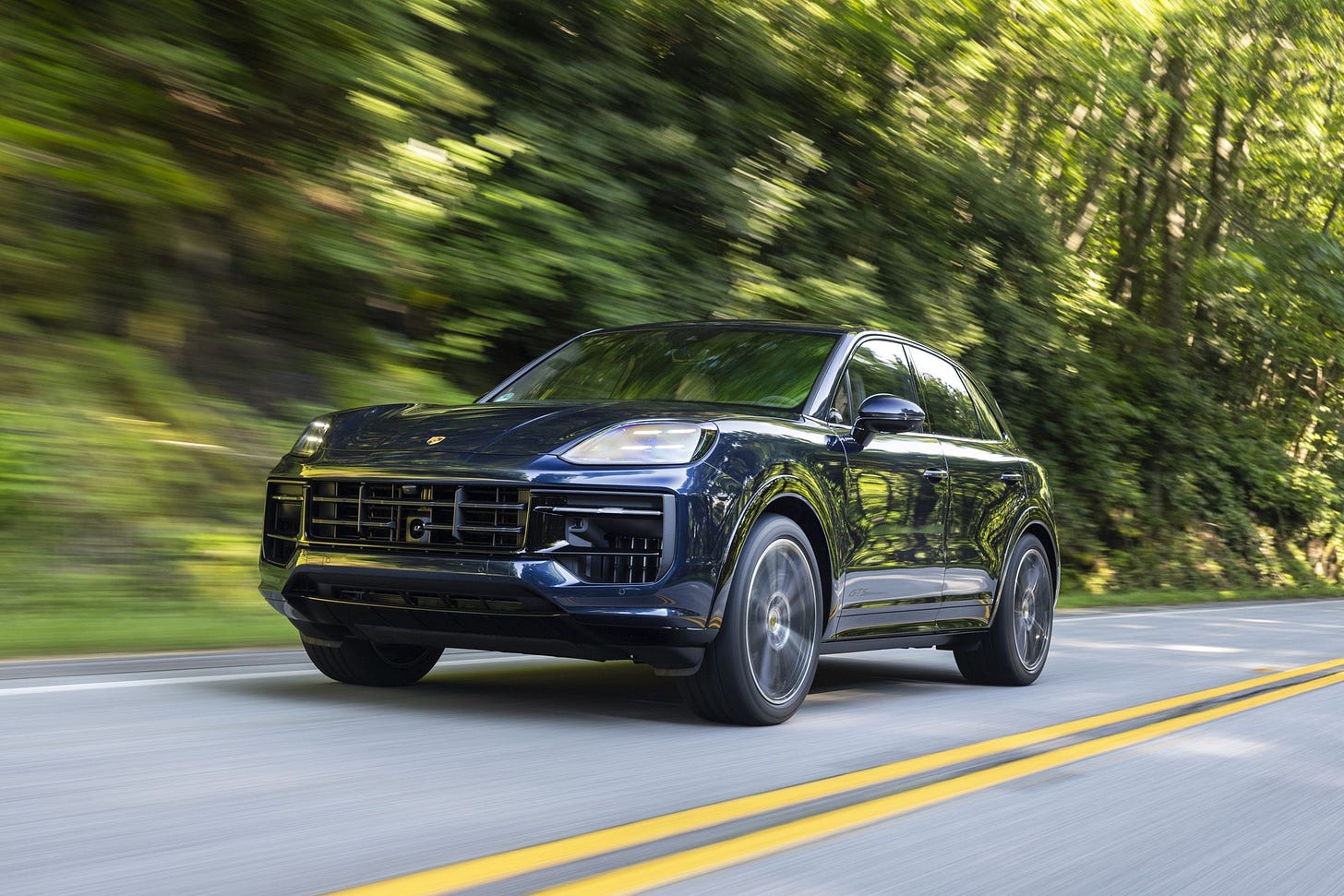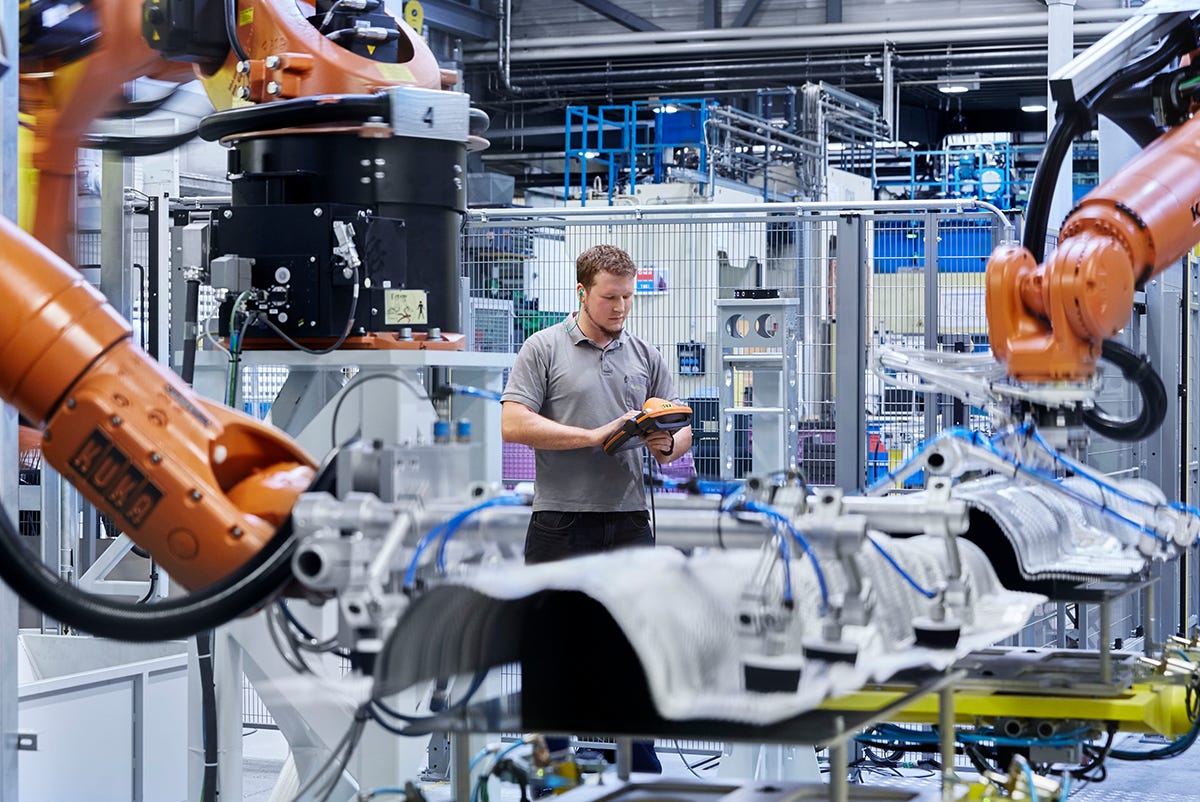Perfumes, cars and a takeover
La Française de l’Energie, Ericsson, Givaudan, Sidetrade, Salzgitter, Autoneum, Interparfums, Sandvik, Schaeffler, Puma and Porsche
La Française de l’Energie (LFDE) Gas picks up while electricity struggles
La Française de l’Energie shared its Q2 2024–25 sales numbers, and while the results show some challenges, there are promising signs of recovery. Sales totaled €8.5 million, down 10% compared to the same quarter last year. However, there’s a silver lining: sales improved by 20% sequentially from Q1. The drop compared to last year was largely due to weaker electricity sales, though contributions from the Greenstat partnership helped soften the blow.
Electricity sales were the biggest drag, coming in at €3.5 million—a 43% drop from the previous year—hit by lower prices and reduced volumes. But things are looking up for the rest of the year, as hedging contracts priced at €150/MWh should provide a boost. On the other hand, gas sales showed strong recovery, climbing to €2.8 million from just €0.3 million in Q1, thanks to the resumption of gas injections into the GRTgaz network after maintenance delays. Greenstat added another €2 million in revenue this quarter, though this was a slight decline from Q1.
LFDE isn’t just focused on the numbers; it’s making progress on the ground too. The company received local approvals for new cogeneration units at its Angres and Rouvignies sites, which will bring its total installed capacity to 28.5 MW. Meanwhile, it continues to pursue legal action against GRTgaz for compensation related to past network outages and is moving forward with major projects in Norway, including a 100 GWh biogas site set to launch in 2025 and electrolysers expected in 2026.
Despite some short-term softness, LFDE’s long-term potential looks strong. The company continues to have an attractive valuation compared to peers.
Ericsson (ERICB) Not that exciting
So, the latest quarterly results are in, and they didn’t quite hit the mark people were hoping for, even though sales were pretty much as expected and the gross margin was actually better. Revenues came in at SEK 72.9 billion, showing a 2% organic growth. In terms of regions, North America was a major bright spot, with a hefty 54% increase, and networks specifically shot up by 70%. Europe and Latin America also grew by 2%, but Southeast Asia saw a 28% dip, Northeast Asia was down 22%, and the Middle East and Africa (MEA) dropped 18%.
The adjusted gross margin hit 46.3%, thanks to a good market mix and some efficient supply chain management. Net income was SEK 4.9 billion, which was quite a bit lower than what consensus was expecting.
Breaking it down by segment, in short, the Network division saw sales up by 5% and decent EBITA margin (21.6%). On the other hand, Cloud Software EBITA margin was a bit underwhelming at 9.3%. The Enterprise segment didn’t do so well, with sales at SEK 6.1 billion, down 7%. The EBITA margin of -19.3% was a big miss.
The company’s CEO mentioned seeing signs that the overall RAN market is stabilizing, and they’re making progress towards their long-term EBITA goals. Despite some positive trends, like the strong performance in North America and improving conditions in Europe, the overall results were a bit mixed, and higher variable incentives hit the bottom line. The stock’s trading at a 14.3x P/E ratio for 2025, which seems fair given the market trends, but a slightly negative reaction isn’t off the table.
Givaudan (GIVN) Strong again, but for how long
Givaudan has kicked off the morning with impressive quarterly results, showing they're on track to surpass their mid-term guidance. Their total revenues for the quarter came in at CHF 1,768 million, marking a 10.1% year-over-year increase on a like-for-like basis. This was slightly above the consensus expectations and aligned with analysts' projections. The company continues to perform well across all markets, segments, and customer groups, although specific figures weren't disclosed.
Very strong free cash flow, at CHF 1,158 million or 15.6% of sales, which is a significant 25.9% increase from the full-year 2023. This helped reduce their leverage ratio to 2.3x, down from 2.9x in the first half of 2024.
Breaking down the results, the Fragrance & Beauty segment saw revenues increase by 9.7% year-over-year in Q4 2024 on a like-for-like basis. This growth was driven by strong volumes across all sub-segments. Even though Consumer Products seem to be slowing a bit, the strong performance in this segment helped boost EBITDA margins to 26.4%, up from 23.5% in the second half of 2023.
The Taste & Wellbeing segment also showed resilience, with a 10.5% year-over-year growth in Q4 2024. The company experienced strong growth across all regions, with notable volume recovery in North America and APAC. The snacks, beverages, sweet goods, and savory segments all performed well.
Givaudan remains confident in its growth trajectory as it moves towards 2025, backed by strategic initiatives and a robust portfolio. However, we believe that the market has already priced in the quality of the company and growth ahead.
Sidetrade (ABLFR) Finishing strong with an eye on international expansion
Sidetrade wrapped up 2024 on a high note, delivering Q4 revenues of €15.3 million, a 32% jump compared to last year. Even more impressive, 12% of that growth was organic. For the full year, revenues hit €55 million, up 26%, with 14% organic growth.
The company’s SaaS subscriptions, which account for more than 80% of its revenue, grew by 22%, with a hefty 14% coming from organic expansion. Services revenue also had a strong year, rising 30%. A big part of this success comes from Sidetrade’s international business, which now makes up 65% of its total revenue. The US market is particularly noteworthy, growing 36% year-over-year to contribute €16.6 million—or 30% of overall revenue. Sidetrade is also making a name for itself with large enterprise clients, as evidenced by a 44% jump in subscriptions from companies generating more than €2.5 billion in revenue.
Sidetrade’s future looks bright. Annual recurring revenue bookings hit €6.5 million in 2024, with Q4 alone contributing over €2 million, a 30% increase compared to the previous year. Management has hinted at better-than-expected profitability for 2024, with the EBIT margin projected to reach 14.9%. However, there’s a possibility of increased investment in North America, which could slow margin improvements in 2025—but with good reason.
Sidetrade’s strong growth, solid bookings, and positive outlook make it an appealing investment. With steady revenue streams, a focus on big accounts, and a clear path to expansion, Sidetrade is poised for another strong year in 2025.
Salzgitter (SZG) A Tempting Proposal
Salzgitter has announced that it has received a nonbinding offer from building materials giant GP Günter Papenburg and scrap processor TSR.
The proposed offer stands at €18.5 per share, presenting a 33% premium over Salzgitter's share price as of November 3. This offer represents a significant premium compared to the sector multiples of other European carbon steelmakers, valuing Salzgitter at ~5x FY2025e EBITDA. The offer's success is contingent upon acquiring 45% of Salzgitter's capital, an increase from the 25.05% currently held by GP Günter Papenburg.
Notably, the 29.99% stake in Aurubis, valued at €1 billion with a current share price of €18, almost justifies the entire offer price independently.
From an industrial standpoint, the motivation behind this potential merger remains ambiguous. Presently, Salzgitter supplies slag, a byproduct of smelting iron ore and scrap, to Papenburg for use in cement and concrete production. The extent to which this collaboration could expand is uncertain.
However, synergy prospects with TSR appear more promising, as TSR produces high-quality scrap essential for Salzgitter's transition from blast furnaces to electric arc furnaces. This shift is pivotal given that direct reduced iron (DRI), an alternative input, has yet to establish a viable business model in Europe.
Salzgitter, a relatively small player with an anticipated steel output of 6 million tons in 2024, faces significant challenges due to crises in the automotive and construction sectors. Their decarbonization efforts are projected to result in a cash burn of €0.5 billion annually in 2025 and 2026, with an uncertain recovery expected in 2027.
Aurubis might be the primary allure for the partners involved. Synergies with TSR could potentially enhance throughput and recovery by combining their expertise and sourcing operations. Aurubis has recently garnered interest from notable investors like Dirk Rossmann, Goldman Sachs, and Susquehanna. There is speculation that one or more of these investors could collaborate with Salzgitter's new owners in a potential takeover bid.
Autoneum (AUTN) Resilient, but misses the mark
Autoneum has released its preliminary results for 2024, and while the company hit its targets, the numbers fell slightly below what analysts were hoping for. Full-year revenue reached CHF 2.34 billion, up 2% from 2023. Organic growth declined by 2.9%, reflecting ongoing challenges in the global light vehicle production market. On the bright side, EBIT margins exceeded 5%, a clear improvement from 2023’s 4.6%. Operating free cash flow was a standout, more than doubling from CHF 47 million in 2023 to over CHF 100 million.
Regionally, results were mixed. Europe saw solid growth, with revenues up 7% to CHF 1.15 billion, but North America slipped by 1%, landing at CHF 885 million. Asia faced a tougher year, with revenues dropping 18%, while SAMEA (South America, Middle East, and Africa) emerged as a bright spot, growing 11%.
Autoneum hasn’t provided its guidance for 2025 yet—that’s expected in March—but analysts are anticipating modest improvements. The company is also set to consolidate its 70% stake in Jiangsu Huanyu Group in China, potentially adding more opportunities to the mix.
Despite slightly missing expectations, Autoneum’s performance remains commendable in a tough market. With improved profitability and strong cash flow, the company is on solid footing heading into 2025.
Interparfums (IPAR) Room for Optimism
Interparfums wrapped up 2024 with Q4 sales hitting €200.3 million, a 6.7% increase year-over-year. While it landed at the lower end of its guidance and just missed the company’s original estimates of €214 million, the bigger picture looks solid. For the full year, sales reached €880.5 million, up 10.3%, aligning well with management’s target of €880–890 million. The fragrance industry continues to prove resilient, with strong consumer demand even amid economic uncertainties.
Geographically, the numbers show impressive performance across several regions. France led the charge with a 28% boost in sales, driven by standout contributions from brands like Lacoste, Jimmy Choo, and Rochas. Europe wasn’t far behind, growing by 25%, while Latin America posted an 8% gain. The US, facing tougher comparisons from a strong 2023, still managed a 3% increase. These numbers reflect the growing strength of Interparfums’ portfolio, especially with popular lines like Jimmy Choo’s “I Want Choo” franchise continuing to win over consumers.
In terms of profitability, Interparfums has even better news. The company is now projecting a 20% operating margin for 2024, up from its earlier guidance of 19%. This higher profitability is a testament to strong brand performance and disciplined cost management. While 2025 guidance wasn’t explicitly renewed, management hinted at maintaining its growth trajectory, targeting sales of €910–930 million with operating margins holding steady above 19%.
One more highlight, the Van Cleef & Arpels license has been renewed for another nine years, securing a major brand in Interparfums’ portfolio through 2033.
As the company gears up for 2025, new product launches and business development will be key areas to watch. While stock market multiples remain high for the sector, the combination of a solid launch program, resilient demand, and a proven track record gives Interparfums good momentum heading into the new year.
Sandvik (SAND) Big recovery in orders signals brighter days ahead
Sandvik ended 2024 with a bang, reporting strong Q4 results that showed a notable recovery in its infrastructure business. Orders rose 4% on an organic basis to SEK 31.6 billion, beating consensus expectations of SEK 30.4 billion. While sales were flat at SEK 32.1 billion, the highlight was Sandvik Rock Processing’s (SRP) 22% growth, driven by a rebound in infrastructure demand in the US.
SRP’s strong performance is great news not only for Sandvik but also for peers like Metso and Epiroc, which also benefit from infrastructure activity. While Sandvik Mining and Rock Solutions posted a solid 6% growth in orders, Sandvik Manufacturing and Machining Solutions lagged, with orders down 3%, reflecting weaker demand in Europe and the automotive sector.
Profitability held steady, with the adjusted EBITA margin ticking up to 19.6%. Operating free cash flow also impressed, coming in at SEK 6.5 billion. This solid financial performance underscores Sandvik’s ability to navigate a challenging macroeconomic environment while capitalizing on emerging growth opportunities.
The recovery in infrastructure could provide a tailwind for Sandvik in 2025. Despite the positive momentum, Sandvik faces headwinds in automotive and European markets, which account for significant portions of its business. However, with infrastructure demand bouncing back and other divisions holding steady, there’s still plenty to watch as Sandvik gears up for 2025.
Schaeffler (SHA0) Tough markets take a toll on margins
Schaeffler’s preliminary 2024 results are in, and they tell a mixed story. Group sales grew 11% year-over-year to €18.2 billion, thanks in part to the full consolidation of Vitesco Technologies in Q4. But despite this top-line growth, the company fell short of expectations, missing its own EBIT margin guidance of 5–8%. The adjusted EBIT margin came in at 4.5%, significantly below. This translated to an adjusted EBIT of €819 million—a tough result.
The weaker performance was largely due to challenges in Schaeffler’s Bearings & Industrial Solutions Division, as well as disappointing results from Vitesco Technologies. These struggles overshadowed some bright spots, like the company’s operating free cash flow, which reached €360 million—well above the guidance range of €200–300 million.
By the numbers, Schaeffler’s profitability struggles reflect the tough conditions in its key markets. The automotive and industrial sectors remain under pressure, and while hopes were high that Schaeffler could defend its margins, the results suggest otherwise. This unexpected miss is likely to weigh on the company’s shares in the short term.
Schaeffler will post full results release in March. At that time, the company is expected to provide fresh guidance for 2025.
Despite the disappointing margin numbers, Schaeffler’s ability to generate strong cash flow offers some reassurance. Still, the company has its work cut out to regain investor confidence as it navigates a challenging market landscape.
Puma (PUMA) earnings miss expectations, but new initiatives aim for long-term growth
Puma ended 2024 on a bit of a rough note, reporting Q4 sales that were up 9.8% on a currency-adjusted basis to €2.29 billion. While the growth sounds solid, it came in below market consensus. Wholesale revenue picked up nicely, growing 6.9% in Q4 compared to just 1.5% in Q3, while direct-to-consumer sales remained strong with a 16.1% jump. Performance varied across regions, with EMEA leading the way at +14.3%, followed by Other APAC (+19.0%), Europe (+10.3%), Greater China (+7.4%), and North America (+2.6%). However, Latin America saw softer growth at just 7%, a key factor weighing on earnings.
The real disappointment came from Q4 EBIT, which landed at €109 million—well below the €135 million internal target. While gross margins were in line, the weaker performance in Latin America and higher-than-anticipated costs dragged down profitability. To address this, Puma has launched a new cost optimization program, aptly named “NextLevel,” aiming to improve resource allocation and achieve an EBIT margin of 8.5% by 2027.
Puma expects 2025 to bring stronger growth than 2024, alongside an improvement in operating results. But we temper expectations for the coming years. If the company can execute on its efficiency programs and improve margins, it could be well-positioned for a strong recovery.
Porsche (P911) Challenging markets and near-term uncertainty
It looks like continued tough times ahead for Porsche. While the year seems to be finishing well given strong deliveries of the Macan, 2025 looks like another tough year ahead with pressure on revenue and margins. While Porsche historical EBIT margin is around 18%, we believe it might take quite some years to get back to that level.
The main issues stem from a confluence of challenges: higher costs, weaker demand for battery electric vehicles, and sluggish recovery in China. Porsche’s pivot toward prioritizing value over volume has included reducing its exposure to China (down to 18% of sales) and cutting production of the Taycan by 50%. While this approach preserves the brand’s premium positioning, it also limits near-term growth.
Despite these headwinds, Porsche’s premium valuation compared to peers like BMW and Mercedes remains justified, given its higher profitability and resilience. In 2024, Porsche’s Auto EBIT will drop significantly (>20% yoy), but less severe than the declines at BMW and Mercedes. Additionally, Porsche’s strategic moves to streamline costs, such as cutting its Chinese dealership network by 30% by 2027, show a proactive approach to navigating the current challenges.
While Porsche’s short-term prospects are dimmed, its long-term vision remains intact. However, the combination of a strong 911 portfolio (which might be valued similarly to Ferrari’s business) and ongoing efficiency initiatives suggest that Porsche is building a solid foundation for the future.
If you appreciate this post, feel free to share and subscribe below!





Appreciate the exposure to businesses that would not otherwise be on my radar.